 |

| |
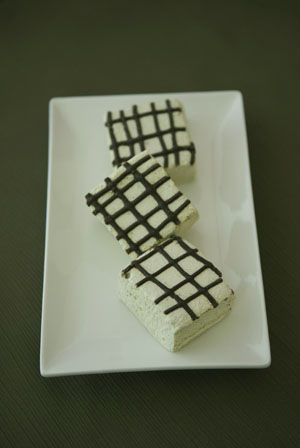
Manna Marshmallows, mint with chocolate striping, offer plenty to chew on. All photography by Corey Lugg | THE NIBBLE. Styling by Lauren LaPenna. |
| WHAT IT IS: Gourmet marshmallows. |
| WHY IT’S DIFFERENT: Soft and fluffy, lovely natural flavors (and lots of them). |
WHY WE LOVE IT: A special alternative to the ubiquitous chocolate and other sweets (not that we’re complaining). |
WHERE TO BUY IT: See individual listings.
|
|
|
 |

Celebrate St. Patrick’s Day (& Easter) With Green Marshmallows
CAPSULE REPORT: Every year around this time we look for a special Irish-themed food. With a bounty of wonderful artisan marshmallow makers in the U.S., this year we picked something not particularly Irish, but certainly green, delicious and fun for holiday celebrations.
Gourmet marshmallows are a great education for anyone who likes fine food. Most of us know only the supermarket variety of marshmallow, a stiff and cottony concoction that has as much to do with a handmade artisan marshmallow as a bottle of Two Buck Chuck wine does with Château Mouton Rothschild.
That’s why, as you’re thinking of ways to treat yourself and your family on St. Patrick’s Day or the upcoming Easter holiday, you should get to know the melt-in-your-mouth world of artisan marshmallows, naturally flavored by gifted confectioners who want to give you an exciting marshmallow experience. While we’ve picked green to celebrate St. Patrick’s Day, these airy delights come in many colors and flavors, as you’ll see in the full review below.
|
| |
|
|
THE NIBBLE does not sell the foods we review
or receive fees from manufacturers for recommending them.
Our recommendations are based purely on our opinion, after tasting thousands of products each year, that they represent the best in their respective categories. |
More St. Patrick’s Day Ideas
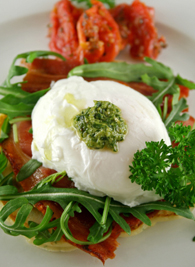 |
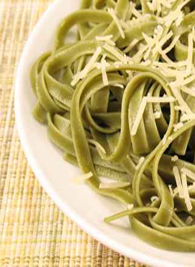 |
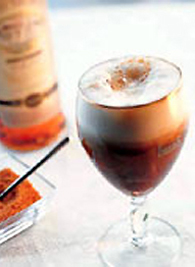 |
St. Patrick’s Day Eggs. Start your day by adding pesto sauce to poached or scrambled eggs, omelets, a frittata or quiche—mix in one teaspoon per egg for “green eggs.” Decorate the plate with fresh basil or spinach leaves. Check out our favorite pestos. |
A Green Dinner. If you don’t want corned beef with cabbage, try spinach pasta and pesto sauce with fresh basil leaves and/or green vegetables: broccoli, snow peas, zucchini (an Italian homage to St. Patrick’s Day). Enjoy it with an Irish beer. |
Don’t forget the Irish Coffee. Read the history of Irish coffee, see the original recipe—quite different from today’s—and get contemporary recipes for your own festivities, with fun variations for everyone. |
Green Marshmallows: Celebrate St. Patrick’s Day...& Easter
INDEX OF REVIEW
Click on the black links to visit other pages.
|
MORE TO DISCOVER
|
A Brief History Of Marshmallows
Here’s a surprise: Marshmallows take their name from a shrubby marsh herb, the marsh mallow plant (Althea officinalis). The root of the marsh mallow plant produces a sticky, white, almost jelly-like sap; when the stems are peeled, they reveal a soft, spongy pith with a texture similar to manufactured marshmallow. The pith was boiled in sugar or honey syrup and dried to produced a soft, chewy confection. Some food historians report that the Egyptians were combining it with honey to make a candy as early as 2000 B.C.E.
The Greeks (and, later, Arabs and Indians) used the mucilaginous root gel to soothe sore throats, and pieces of the root were candied as sweets. But it took the French to create the modern marshmallow as we know it, around 1850. A concoction of egg whites, water, sugar and marsh mallow sap was heated and hand whipped. Marshmallows were created individually, in molds dusted with corn starch. The sap, egg whites and sugar also were made into throat lozenges for coughs and colds. As equipment and methods advanced, mass production of marshmallows became possible, and by 1900 they were sold as penny candy.
|
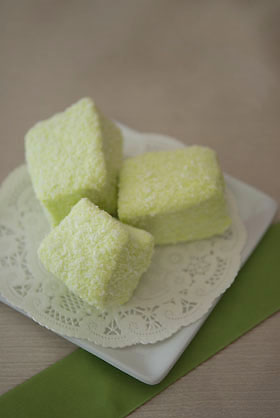
Coconut marshmallows from the Dulces del Rocío line from SplitBeanCoffee.com. |
By the latter part of the 19th century, the evolution of more commercial gelatin products replaced the root of the marsh mallow as the binding agent; previously, the production of gelatin had been a tedious and time-consuming process. The use of egg whites in commercially-made marshmallows has largely gone by the wayside, as well. Today’s marshmallows are made from sugar, corn syrup, gelatin, cornstarch, confectioner’s sugar and flavorings. Vegetarian and kosher marshmallows, which cannot use meat-based gelatin, substitute non-meat gelling agents such as agar; but the sponginess and melt-in-your-mouth quality is not the same.
Continue To Page 2: Gourmet Green Mallows & More
Go To The Article Index Above
Do you have friends who would enjoy THE NIBBLE?
Click here to send them an invitation to sign up for their own copy. |
© Copyright 2004-2025 Lifestyle Direct, Inc. All rights
reserved. All information contained herein is subject to change at any time
without notice. All details must be directly confirmed with manufacturers, service
establishments and other third parties. The material in this e-zine may not
be reproduced, distributed, transmitted, cached, or otherwise used, except with
the prior written permission of Lifestyle Direct, Inc.
|
|

|
 |











